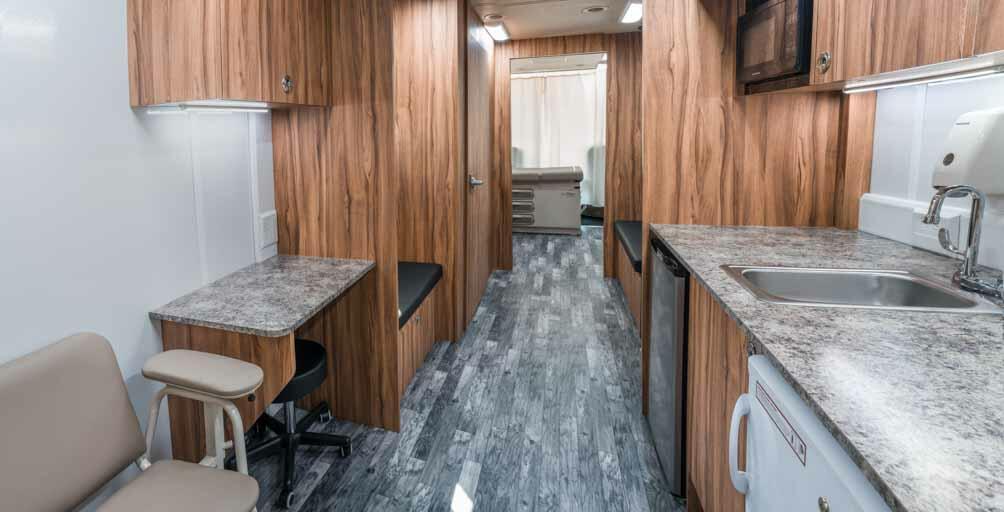Project Summary
The present project describes a health promotion program that features a mobile health promotion unit (MHPU) for spreading awareness about the dangers of heart disease. Heart disease in the leading cause of death worldwide and governments around the globe seek to find way to address the matter (Barquera et al., 2015). Additionally, people living in rural areas have a decreased access to healthcare, and therefore are at increased risk of cardiovascular diseases (Caldwell, Ford, Wallace, Wang, & Takahashi, 2016). An MHPU with the name “Hearty Bus” working together with the American Heart Association (AHA) can improve the situation by spreading awareness about heart disease prevention strategies and providing screening test in areas with low access to healthcare. “Hearty Bus” will have to examination rooms fully equipped and staffed to perform heart disease prevention interventions. The MHPU will travel to a different location every week to increase the coverage of the program. Figures 1-2 provide an outside and inside view of the proposed vehicle for the present project.


Goals and Objectives
Goals and objectives for the present project are closely connected to the distinctive characteristics of the MHPU. “Hearty Bus” is a non-profit endeavor that needs significant initial investments to buy the vehicle, furnish it with necessary equipment, and hire qualified staff. However, the project serves a vital cause of improving national health. Considering these statements, the goals of the present project are as follows:
- Increase awareness about the dangers of heart diseases among patients in rural areas;
- Improve access to preventative medical services including screening and patient education;
- Enhance availability of acute care services while providing continuity of care.
The objectives of the “Hearty Bus” project are listed below:
- Gain adequate financial support through grants and donations during the first three months;
- Develop a balanced marketing campaign to ensure patient flow;
- Create a feasible program using AHA guidelines for heart disease treatment and prevention.
Customers and Stakeholders
The customers of the MHPU are people with increased risk of heart diseases living in rural areas. According to Benjamin et al. (2018), the target population of are people with decreased mobility, low level of income, and age 65 or older. AHA is expected to become a stakeholder of the project, as its mission correlates to the objectives of the project (AHA, n.d.). Additionally, “Hearty Bus” will benefit local hospitals, since it aims at providing continuity of care through scheduling appointments with doctors in the area. In short, while the central stakeholders are the customers, there are other entities that have a vested interest in the project.
Milestones
- Elaboration of a feasible business plan;
- Acquisition of initial investments;
- Purchase of the vehicle and needed equipment;
- Completion of staff recruitment and training.
Timeline
In the Table 1 below is the proposed schedule for the project with a timeline in Figure 3.
Table 1. Project Schedule.

Cost and Resources
The overall cost of the project is estimated to be around $1,300,000 for one year. The budget includes acquisition of non-staffing resources, such as the vehicle, equipment (exam tables, sinks, heart monitors, etc.), and supplies (drugs, specimens, and apparel). As for the staff, the program will employ a project manager, an operations manager, a finance manager, an HR manager, four registered nurses, and two drivers. The estimate is rough and needs further consideration.
References
American Heart Association. (n.d.). About us.Web.
Barquera, S., Pedroza-Tobías, A., Medina, C., Hernández-Barrera, L., Bibbins-Domingo, K., Lozano, R., & Moran, A. E. (2015). Global overview of the epidemiology of atherosclerotic cardiovascular disease. Archives of Medical Research, 46(5), 328–338. Web.
Benjamin, E. J., Virani, S. S., Callaway, C. W., Chamberlain, A. M., Chang, A. R., Cheng, S., … Muntner, P. (2018). Heart disease and stroke statistics—2018 update: A report from the American Heart Association. Circulation, 137(12), e67–e492. Web.
Caldwell, J., Ford, C., Wallace, S., Wang, M., & Takahashi, L. (2016). Intersection of living in a rural versus urban area and race/ethnicity in explaining access to health care in the United States. American Journal of Public Health, 106(8), 1463-1469. Web.
Summit Bodyworks. (n.d.). WellMed Medical. Web.